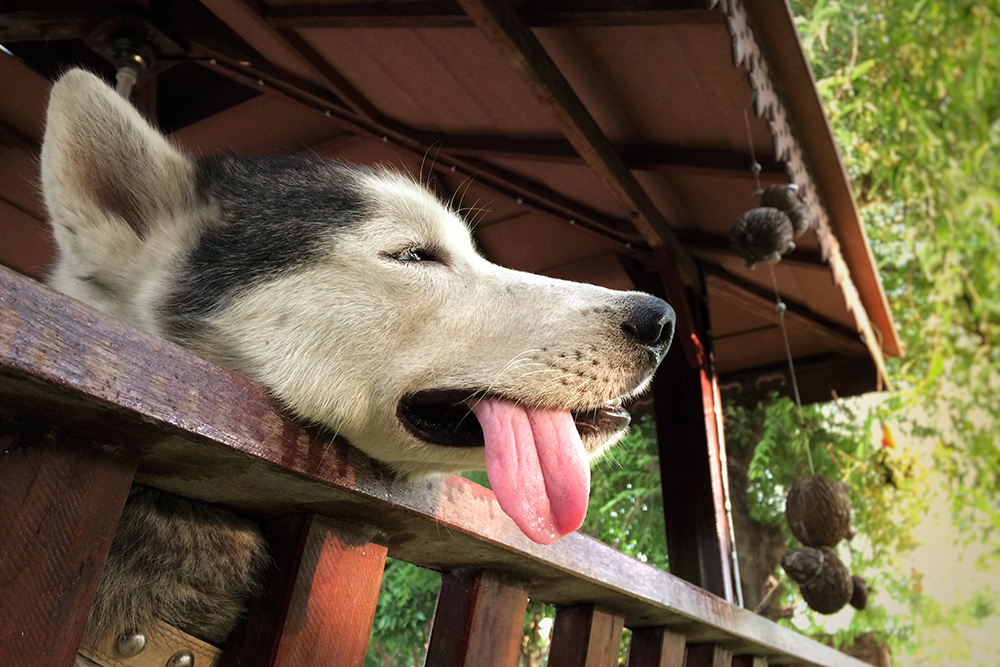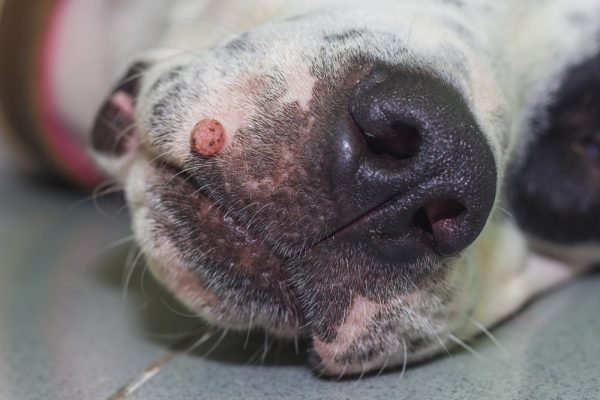In this article
Some dogs, although definitely not all, are known for basking in the sunniest spots in the house and lounging in sunbaked yards. And yet they don’t synthesize vitamin D in the same way people do, so why do they seem to like sunbathing so much?
Dogs have a higher natural body temperature than people, so lying in the sun may assist them to achieve this. And a lot of dogs simply enjoy the feeling of the warmth on their bodies. Most pooches can sunbathe safely, but it does depend on the dog’s condition and even coat color, as well as the temperature outside.
Here, we explore the reasons that dogs like to lie in the sun, as well as the risks and any measures you can take to help mitigate those risks for your pup.

The 4 Reasons the Dogs May Lie in the Sun
1. Aid Sleep
Melatonin is a hormone produced by dogs, as well as people. One of the key purposes of this hormone is that it helps regulate the sleep cycle. Too little melatonin can be a cause of poor sleep patterns.
Melatonin is produced by the pineal gland in the brain, and its production is directly affected by the amount of sunlight received. Increased exposure to sunlight increases the amount of melatonin produced by the body which, in turn, helps maintain your dog’s circadian rhythm.

2. Pain Relief
Arthritis and other painful conditions that cause inflammation of the joints and body can benefit from warmth. That’s why we use heat packs for painful joints.
The warmth causes blood vessels to dilate, in turn, allows the blood to flow more freely. This helps reduce pain caused by tight muscles. It also may help reduce lactic acid buildup that can lead to pain and aches after exercise, which is why your dog might choose to lie in the sun after a particularly grueling hike or exercise.
3. Temperature Regulation
Humans have a natural body temperature of between 97.6 and 99.6 degrees Fahrenheit, whereas dogs have a much higher basal body temperature of between 101 and 102.5 degrees. Lying in sunny spots allows dogs to better maintain this higher body temperature.

4. Comfortable
Some dogs just enjoy lying in the sun. It makes them feel comfortable and warm. In fact, some dogs will lie in hot spots until they overheat, and owners have to take care to ensure they help these dogs regulate their body temperatures.

Is Too Much Sun Bad for Dogs?
Generally, dogs are good at regulating their body temperatures. If they get too hot from lying in the sun, they will move to the shade or head indoors. But, that isn’t true for all dogs, and too much exposure to the sun can be dangerous for dogs. It can cause sunburn and potentially even cancers, with short-haired and white dogs being especially susceptible to these problems.

Signs Your Dog Is Getting Too Much Sun
While some sun is important for dogs, too much exposure to the sun can be harmful. Signs that your dog has been lying in the sun too long include:
- Dehydration – Dogs don’t sweat in the same way as humans, but they do pant to regulate temperature. Panting causes a loss of moisture from the body, in the same way that sweating does for humans. This moisture needs replacing. Panting is natural and, on its own, isn’t a sign that your dog is spending too much time in the sun. However, if your dog is showing signs of dehydration, it could be an indication that they need to spend less time basking.
- Listlessness – High temperatures lead to a loss of energy, naturally. Your dog will be less inclined to run around, play, and exercise. Again, this is expected and natural, to some degree. But if your dog is refusing to walk and can barely get up to move out of the sun, it is a good indication they need to sit in the shade or enjoy cooler temperatures for a while.
- Breathing Problems – Breathing in hot air causes the airways to become inflamed which makes it more difficult to breathe freely. Brachycephalic dogs like Pugs and Boxers are especially prone to breathing problems and you should monitor them for signs of labored breathing.
Heatstroke in Dogs
Generally, if your dog is getting too much sun, they will move out of the sunny spot and find shade. They should also drink some water and pant to help regulate body temperature. In extreme cases, though, too much exposure to the sun can cause heatstroke. Signs include heavy panting and labored breathing, excessive drooling, and an increased heart rate. If you suspect your dog is suffering heatstroke, you should consult a vet as soon as possible.
Did you know you can speak to a veterinarian without having to travel? Just head over to PangoVet. It's our online service where you can talk to a vet online and get the advice you need for your pet — all at an affordable price!


Conclusion
Dogs benefit from regular exposure to the sun. It can help alleviate pain and inflammation. It also offers some vitamin D intake, when the dog grooms itself, although a dog’s primary source of this essential vitamin is via its diet. However, too much sun can be dangerous for dogs, and some breeds are especially susceptible to extreme heat.
Featured Image Credit: Jaromir Chalabala, Shutterstock


















